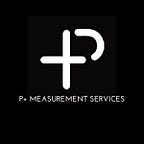PR: Should you be afraid of analyzing negative media coverage?
Picture this. You’re a professional working in communications. One morning, your organization makes the front page or Margaret Wente’s column for all the wrong reasons.
You bust your butt to get your side of the story across, set the facts straight, and extricate your organization from the crisis.
Everybody is shaken by the experience. Your bosses are extremely nervous.
In this situation, would you dare to measure the impact of all this negative coverage on your organization?
As I’m sure you know, good news rarely makes headlines.
I am convinced, for instance, that the staff at Collège Brébeuf, a prestigious Montreal private school, does inspiring — even innovative — work to encourage their students to excel. Unfortunately, such laudable initiatives will never be enough to lead the six o’clock news.
Yet, when Collège Brébeuf fired a theater teacher — whether it was justified or not is beside the point — the story made headlines and the school’s reputation took a serious hit. That’s how the media machine works!
To fear or not to fear?
When this type of situation happens to our clients, they ask us to measure the effects of the negative media coverage on their organization. They want to know — and rightly so — whether their handling of the coverage has helped calm the storm, or added fuel to the fire.
But some communications professionals are reluctant to analyze negative news. After all, nobody likes to receive a report card peppered with D’s in school!
Media analysis is different from a report card!
Here are five reasons for analyzing negative press:
- Distance. What if it turns out the coverage wasn’t so negative after all? An external, independent observer can help put things in perspective — and reassure management.
- Score. A firm specialized in media analysis can determine the negative brand impact in dollars. It’s important to use a method that is easy to understand for all types of organizations.
- Confirmation. Did the current media strategy turn the tide?
- Distinction. A detailed analysis of the content of media coverage helps to distinguish the impact of each issue, which is essential for rehabilitating an organization’s battered reputation.
- Clarity. Which issues would it be appropriate to put forward during the media operations following the crisis?
Media analysis is a valuable management tool, even when media coverage is negative.
Why? Because it helps you keep track of the facts and fine-tune what is or isn’t working in your communications.
Back to the Collège Brébeuf case
The private school did not renew the contract of a drama teacher because she had appeared nude in a number of films some 50 years earlier. Some enterprising students had come across certain scenes featuring their drama teacher that were considered “erotic” for the time. And a scandal was born!
- Let’s use a negative news item, published on page 7 of Le Journal de Montréal on Tuesday, October 20 2014. This article represented a brand impact of -$41,420* for Collège Brébeuf, according to our measure [d] media evaluation tool
Collège Brébeuf’s administration issued a press release in response to the crisis suggesting that they were open to the teacher’s return.
- In the wake of the release, Collège Brébeuf director Michel April gave FM 98.5 radio host Paul Arcand an interview. Insofar as the interview didn’t go too badly, it had a positive brand impact of $11,960 * for the school.
Had it not been for the terrible attack in Ottawa later that day, Brébeuf’s director would no doubt have given more interviews. In spite of everything, did Brébeuf do enough to re-establish its reputation in this affair?
The article first appeared in Measure Media
